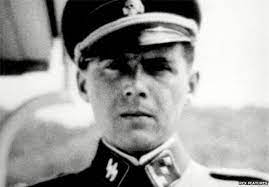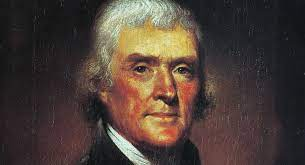Brooklyn Bridge opens
After 14 years, the Brooklyn Bridge over the East River opens, connecting the great cities of New York and Brooklyn for the first time in history. Thousands of residents of Brooklyn and Manhattan Island turned out to witness the dedication ceremony, which was presided over by President Chester A. Arthur and New York Governor Grover Cleveland. Designed by the late John A. Roebling, the Brooklyn Bridge was the largest suspension bridge ever built to that date.
John Roebling, born in Germany in 1806, was a great pioneer in the design of steel suspension bridges. He studied industrial engineering in Berlin and at the age of 25 immigrated to western Pennsylvania, where he attempted, unsuccessfully, to make his living as a farmer. He later moved to the state capital in Harrisburg, where he found work as a civil engineer. He promoted the use of wire cable and established a successful wire-cable factory.
Meanwhile, he earned a reputation as a designer of suspension bridges, which at the time were widely used but known to fail under strong winds or heavy loads. Roebling is credited with a major breakthrough in suspension-bridge technology: a web truss added to either side of the bridge roadway that greatly stabilized the structure. Using this model, Roebling successfully bridged the Niagara Gorge at Niagara Falls, New York, and the Ohio River at Cincinnati, Ohio. On the basis of these achievements, New York State accepted Roebling’s design for a bridge connecting Brooklyn and Manhattan–with a span of 1,595 feet–and appointed him chief engineer. It was to be the world’s first steel suspension bridge.
Just before construction began in 1869, Roebling was fatally injured while taking a few final compass readings across the East River. A boat smashed the toes on one of his feet, and three weeks later he died of tetanus. He was the first of more than two dozen people who would die building his bridge. His 32-year-old son, Washington A. Roebling, took over as chief engineer. Roebling had worked with his father on several bridges and had helped design the Brooklyn Bridge.
The two granite foundations of the Brooklyn Bridge were built in timber caissons, or watertight chambers, sunk to depths of 44 feet on the Brooklyn side and 78 feet on the New York side. Compressed air pressurized the caissons, allowing underwater construction. At that time, little was known of the risks of working under such conditions, and more than a hundred workers suffered from cases of compression sickness. Compression sickness, or the “bends,” is caused by the appearance of nitrogen bubbles in the bloodstream that result from rapid decompression. Several died, and Washington Roebling himself became bedridden from the condition in 1872. Other workers died as a result of more conventional construction accidents, such as collapses and a fire.
Roebling continued to direct construction operations from his home, and his wife, Emily, carried his instructions to the workers. In 1877, Washington and Emily moved into a home with a view of the bridge. Roebling’s health gradually improved, but he remained partially paralyzed for the rest of his life. On May 24, 1883, Emily Roebling was given the first ride over the completed bridge, with a rooster, a symbol of victory, in her lap. Within 24 hours, an estimated 250,000 people walked across the Brooklyn Bridge, using a broad promenade above the roadway that John Roebling designed solely for the enjoyment of pedestrians.
The Brooklyn Bridge, with its unprecedented length and two stately towers, was dubbed the “eighth wonder of the world.” The connection it provided between the massive population centers of Brooklyn and Manhattan changed the course of New York City forever. In 1898, the city of Brooklyn formally merged with New York City, Staten Island, and a few farm towns, forming Greater New York.
SPORTS
1964
Riot erupts at Lima, Peru soccer match, killing hundreds
A referee’s call in a soccer match between Peru and Argentina sparks a riot on May 24, 1964. More than 300 fans were killed and another 500 people were injured in the violent melee that followed at National Stadium in Lima, Peru. The match was a qualifier for the 1964 Olympics and the Peruvian fans were fiercely cheering on their team with only a few minutes left in a close game. When the referee disallowed an apparent goal for Peru, the stadium went wild. The resulting panic and crowd-control measures taken caused stampedes in which people were crushed and killed.
INVENTIONS & SCIENCE
1844
Samuel Morse demonstrates the telegraph with the message, “What hath God wrought?”
In a demonstration witnessed by members of Congress, American inventor Samuel F.B. Morse dispatches a telegraph message from the U.S. Capitol to Alfred Vail at a railroad station in Baltimore, Maryland. The message—“What Hath God Wrought?”—was telegraphed back to the Capitol a moment later by Vail. The question, taken from the Bible (Numbers 23:23), had been suggested to Morse by Annie Ellworth, the daughter of the commissioner of patents.
INVENTIONS & SCIENCE
1543
Astronomer Nicolaus Copernicus dies
On May 24, 1543, Polish astronomer Nicolaus Copernicus dies in what is now Frombork, Poland. The father of modern astronomy, he was the first modern European scientist to propose that Earth and other planets revolve around the sun. Prior to the publication of his major astronomical work, “Six Books Concerning the Revolutions of the Heavenly Orbs,” in 1543, European astronomers argued that Earth lay at the center of the universe, the view also held by most ancient philosophers and biblical writers. In addition to correctly postulating the order of the known planets, including Earth, from the sun, and estimating their orbital periods relatively accurately, Copernicus argued that Earth turned daily on its axis and that gradual shifts of this axis accounted for the changing seasons. He died the year his major work was published, saving him from the outrage of some religious leaders who later condemned his heliocentric view of the universe as heresy. By the late 18th century, the Copernican view of the solar system was almost universally accepted.
WORLD WAR II
1943
Auschwitz gets a new doctor: “the Angel of Death”
On May 24, 1943, the extermination camp at Auschwitz, Poland, receives a new doctor, 32-year-old Josef Mengele, a man who will earn the nickname “the Angel of Death.” Born March 16, 1911, in Bavaria, Mengele studied philosophy under Alfred Rosenberg, whose racial theories highly influenced him. In 1934, already a member of the Nazi Party, he joined the research staff of the Institute for Hereditary Biology and Racial Hygiene.
WORLD WAR II
1941
German battleship, the Bismarck, sinks Britain’s HMS Hood
On May 24, 1941, Germany’s largest battleship, the Bismarck, sinks the pride of the British fleet, HMS Hood. The Bismarck was the most modern of Germany’s battleships, a prize coveted by other nation’s navies, even while still in the blueprint stage (Hitler handed over a copy of its blueprints to Joseph Stalin as a concession during the days of the Hitler-Stalin neutrality pact). The HMS Hood, originally launched in 1918, was Britain’s largest battle cruiser (41,200 tons)-but also capable of achieving the relatively fast speed of 31 knots. The two met in the North Atlantic, northeast of Iceland, where two British cruisers had tracked down the Bismarck. Commanded by Admiral Gunther Lutjens, commander in chief of the German Fleet, the Bismarck sunk the Hood, resulting in the death of 1,500 of its crew; only three Brits survived.
SPORTS
1935
MLB holds first night game
The Cincinnati Reds beat the Philadelphia Phillies 2-1 on May 24, 1935 in Major League Baseball’s first-ever night game, played courtesy of recently installed lights at Crosley Field in Cincinnati. The first-ever night game in professional baseball took place May 2, 1930, when a Des Moines, Iowa, team hosted Wichita for a Western League game. The game drew 12,000 people at a time when Des Moines was averaging just 600 fans per game. Evening games soon became popular in the minors: As minor league ball clubs were routinely folding in the midst of the Great Depression, adaptable owners found the innovation a key to staying in business. The major leagues, though, took five years to catch up to their small-town counterparts.
U.S. PRESIDENTS
1797
Thomas Jefferson inquires about a former flame
On May 24, 1797, future President Thomas Jefferson writes to his friend Angelica Church, inquiring casually about their mutual friend, Maria Cosway, a woman who had once captured his heart and inspired a romantically themed essay. In 1786, a widowed Thomas Jefferson met Maria (pronounced Mariah) Cosway in Paris while he was serving as the U.S. minister to France. Cosway was born to English parents in Italy and, by the time she met Jefferson, had become an accomplished painter and musician. She was also married. The two developed a deep friendship and possibly more, although a sexual relationship has never been proven. The usually self-contained Jefferson acted like a giddy schoolboy with Cosway, at one point leaping over a stone fountain while the two were out walking and falling and breaking his right wrist. After the wrist healed, a chagrined Jefferson wrote his famous Head and Heart Letter to Cosway in October 1786, just after she left for London with her husband for an undetermined period of time. The letter reveals him to have been a lovesick man whose intellect battled with a heart aching for a woman he could not have.
CRIME
1989
Lori Ann Auker disappears from a parking lot
Lori Ann Auker, a 19-year-old pet shop worker, disappears from Northumberland County, Pennsylvania. After failing to show up for work, her car was found the next day in the parking lot of the Susquehanna Valley Mall where The Pet Place was located. Police had no clues as to what had happened to her when she arrived at the mall that morning.
AMERICAN REVOLUTION
1775
John Hancock becomes president of Congress
On May 24, 1775, John Hancock is elected president of the Second Continental Congress. John Hancock is best known for his large signature on the Declaration of Independence, which he jested the British could read without spectacles. He was serving as president of Congress upon the declaration’s adoption on July 4, 1776, and, as such, was the first member of the Congress to sign the historic document.
WORLD WAR I
1917
British naval convoy system introduced
On May 24, 1917, driven by the spectacular success of the German U-boat submarines and their attacks on Allied and neutral ships at sea, the British Royal Navy introduces a newly created convoy system, whereby all merchant ships crossing the Atlantic Ocean would travel in groups under the protection of the British navy.











Comments
Post a Comment